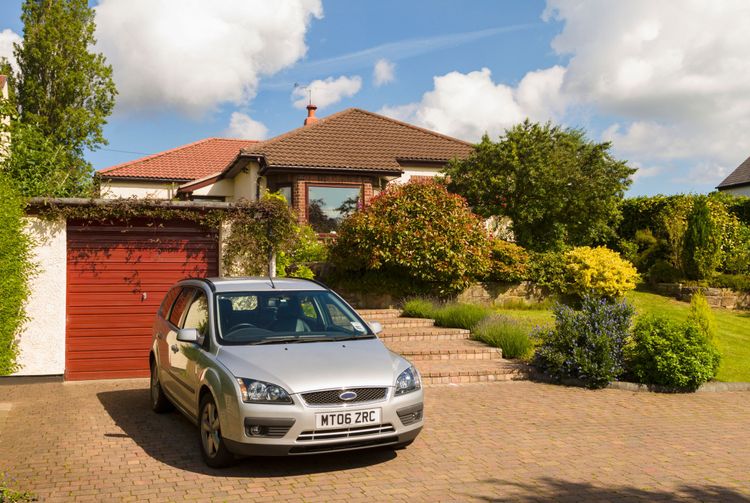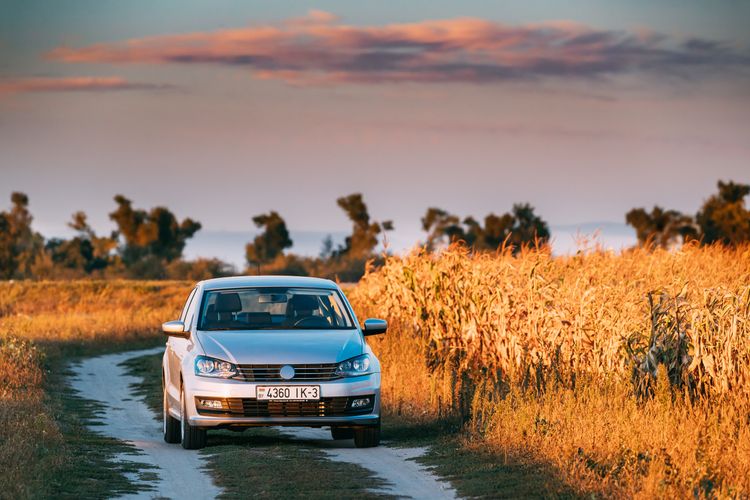Rules to follow while driving on highway
When you purchase a new car and start your journey for a daily commute or with long drive exploration, one of the main types of roads that you come across is a highway! With increased roadway developments, highways have become prominent even within the city's road limits.
As many different types of vehicles utilise it at every instant of time, highway driving requires a shared commitment to safety and order. Whether following lane discipline, driving safely, or abiding by traffic signals, every aspect is key to collective effort, making everyone's journey to the destination safe and sound.
In this blog, we will explore some of the highway rules in India that you can brush up on before starting a journey at any time!
Share this article
Protect Your Ride with the Best Car Insurance Plans
Believe it or Not! Save upto* 75% on TATA AIG Car Insurance
List of Content
- Avoid Over Speeding: Accelerating And Mastering Consistent Speed
- Know Your Speed Limits: Driving Wisdom
- Follow Lane Discipline: Navigating Roads With Order And Safety
- Wear Your Seat Belts: Buckle Up For Life
- Maintain Safe Distances: Embrace The Three Second Rule
- Follow Traffic Signals: Safeguarding Journeys With The Rule Of The Road
- Follow Overtaking Rules: To Pass With Precision
- Night Time Highway Safety: Essential Rules
- Highway Breakdown Rules: Resolute To Stay Safe And Calm
- Have A Car Insurance Policy: Elevating Highway Safety
- Highway Harmony: Tips For A Safe Journey
- Wrapping Up
- FAQS
Avoid Over Speeding: Accelerating And Mastering Consistent Speed
Speed is the most crucial aspect when you are headed towards the highway. While it provides for higher acceleration potential, overspeeding can lead to accidents, severe damage to vehicles, and even death in some instances.
Assess the road conditions and moving traffic to set the pace for highway car driving in India. Speed up when you have the opportunity, but always keep the braking distance in mind!
While approaching intersections, slow down and use indicators while turning. Keep lowering your speed as you get the visibility rather than applying sudden brakes.
Know Your Speed Limits: Driving Wisdom
As the roads are wider and there is comparatively less traffic, you can quickly increase and maintain the speed. However, if there are set guidelines to follow a specific speed limit, ensure to follow them considering the common safety of all the vehicles on the road.
Maintaining optimal speed and compliance with guidelines will pave the way for an organised driving environment safer for the expansive stretch of the highway.
Wear Your Seat Belts: Buckle Up For Life
Wearing a seat belt, beyond legal requirements, should be a fundamental responsibility in highway driving. It prevents injuries due to sudden collisions and reduces the risk of death during severe accidents.
Ensure to wear a seat belt correctly and not just to turn off the alarm. Also, wear it all the time when you are travelling. Even if a situation demands you to remove your seat belt, stop your car, manage the situation and continue your journey.
Maintain Safe Distances: Embrace The Three Second Rule
Maintaining safe distances is yet another significant rule for highway car driving in India. Considering the unpredictable traffic that can force vehicles to apply brakes when it is actually not intended, it is very important to maintain safe distances.
The "three-second rule" can be very helpful in such scenarios. It provides a buffer for sudden, unexpected traffic movements, providing more reaction time and braking distance. The three-second rule refers to staying at least 3 seconds away from the vehicle in front of you.
To understand this rule, decide on a fixed point on the road and determine the seconds it takes for your car to reach that point after the car in front of you has reached and passed it. While driving at night, you can increase the time to 5 seconds and even more on a rainy or foggy day.
Follow Traffic Signals: Safeguarding Journeys With The Rule Of The Road
Traffic signals are established as a communication system to regulate the flow of different types of vehicles and pedestrians at intersections. It is important to be patient and adhere to these traffic signals to be more attentive and contribute to secured coexistence on highway driving.
Highway traffic signals dictate speed regulations based on accident-prone zones and help you avoid unnecessary collisions. On huge intersections, they help manage the merging of vehicles entering the highway to regulate the traffic.
It is important to note that following traffic signals is not merely an obligation but a legal requirement that can invite penalties for negligence.
Follow Overtaking Rules: To Pass With Precision
Following overtaking rules in India is considered very important on a highway, as wrong overtaking decisions are one of the major causes of accidents in India.
If you have decided to overtake a vehicle, ensure to have ample space and clear visibility. Check your mirrors for vehicles behind you that may be approaching for an overtake. Provide proper indications well in advance to signal your overtaking intention to the vehicles around your car.
Anticipate the required pace, overtake from the right side using the right lane, and proceed with concentration. Ensure to maintain safe distances between the vehicles during and after overtaking to make a safe transition to the lane.
Be more vigilant, patient and judgemental about overtaking vehicles. When in doubt, it is better not to proceed. Overtake only when the condition is suitable. Avoid areas with limited visibility, especially intersections and curves.
Night Time Highway Safety: Essential Rules
Driving at night on a highway can be extremely challenging, and preferably, it can be avoided. However, during extreme and compelling situations, follow the essential highway rules in India to stay safe throughout your journey at night.
Firstly, clean your windshield and ensure all the lights are in the best condition, including the brake lights and the indicators. Set your seating position in line with the visibility based on the headlight. Avoid high beams while overtaking or when other vehicles are approaching.
Following the speed limits and staying alert for nighttime driving requires more attention and timely actions.
Highway Breakdown Rules: Resolute To Stay Safe And Calm
Breakdown on a highway calls out for immediate attention. However, it is essential to stay calm to make the experience safer and take the necessary steps.
Firstly, move your car to a safe location. It can be moved to an emergency lane or the shoulder of the highway. Turn on hazard lights and keep the reflective triangle behind your car to warn other vehicles.
Try to attempt repair only if you have the expertise to get it right. Otherwise, you can always call the National Highway Helpline Number 1033 for assistance or contact your insurer for roadside assistance if you have the added coverage.
Have A Car Insurance Policy: Elevating Highway Safety
While following all the essential road rules in India, unprecedented scenarios, such as an accident, can always pose a challenging situation. On highways, as speeding is higher, the risk of accidents automatically increases.
Four wheeler insurance provides financial protection against damages caused to your vehicle and third parties. From minor damages to total loss, it can cover all the necessary expenses. In addition, when you buy car insurance, you can enhance the coverage by purchasing add-on covers such as zero depreciation, roadside assistance, etc.
As it is an affordable option, you can compare car insurance plans and choose a suitable policy with adequate coverage to add a layer of protection and financial shield to maintain your car to the best standards.
Highway Harmony: Tips For A Safe Journey
Road-Ready Essentials: Preparing Your Car For The Highway
Certain important aspects that you need to follow while embarking on a journey on the highway start well in advance - the preparation stage!
You have to ensure that your car is in good condition to be able to follow the road rules in India at its best.
Among the essentials, check for some of the crucial aspects, such as the tyre pressure, fluid levels, brakes, electricals, and battery condition. Also, remember to take a first aid kit and, most importantly, the necessary documents, including the Registration Certificate and car insurance.
Highway Hydroplaning: Ensure Safety On Wet Roads
Driving on a highway can get typically challenging on a rainy day. Hydroplaning, a result of wet roads, is a common scenario on a highway. It refers to a loss of traction and control when water builds up between the road surface and the tyres of your vehicle.
Your car can spin out of control as you experience a lack of steering response. Therefore, be sure to drive slowly and safely on a wet road.
Also, be aware of pooled water surface areas that can trigger such reactions when you are speeding. Although predicting pooled areas gets challenging, highway driving at a controlled speed and adjusting to road conditions can secure your journey.
Highway Watch: Safety With Mirror Awareness
While mirrors are always used while overtaking or changing lanes on highway driving, it is highly recommended to keep a constant eye on all three mirrors often to ensure safety throughout the journey and respond quickly to adverse decisions.
It helps you to be aware of the traffic situation around your car and make prudent decisions. You can also gauge the traffic flow and maintain a constant speed.
Also, install blind spot mirrors to give a wider range of visibility and act spontaneously when a situation is probable to go out of your control.
Wrapping Up
When you are on a long drive with your most loved car on a highway, being aware of the rules and regulations and following them is crucial for a responsible and peaceful driving experience. From following the speed limits to ensuring lane discipline, every single action counts for a responsibility-seeking coexistence with fellow travellers on the highway. While we choose different road networks, let safety be the primary aspect that holds us strong and stay protected on highway driving.
FAQS
How to drive your car safely on a highway?
Follow these simple steps to drive your car safely on a highway:
Know your speed limits and avoid overspeeding
Follow lane discipline by driving on the appropriate lanes and changing with prior indications
Maintain safe distances between vehicles
Overtake cautiously with proper indications and use the right lane
Maintain constant speed
Wear your seat belt
Use proper lights and indicators while driving at night
What is the basic rule to be followed when on highways?
The basic and primary rule to be followed on highways is the speed-oriented lane discipline. The right lanes should be used for speeding and overtaking vehicles. The left lanes should be used by slow and heavy vehicles. The middle lanes should be used by vehicles moving at a constant speed straight for a longer duration.
Protect Your Ride with the Best Car Insurance Plans
Believe it or Not! Save upto* 75% on TATA AIG Car Insurance
People also search for
Key Insurance term
Share this article
Latest from our blogs

Zero Depreciation Car Insurance Cover
zero depreciation / depreciation reimbursement cover reimbur...
Read More
What is Insured declared value (IDV)?
The term ‘IDV’ refers to the maximum claim your insurer will...
Read More
How is your car insurance premium calculated?
Well it’s about time that changed, don’t you think? Read on ...
Read More